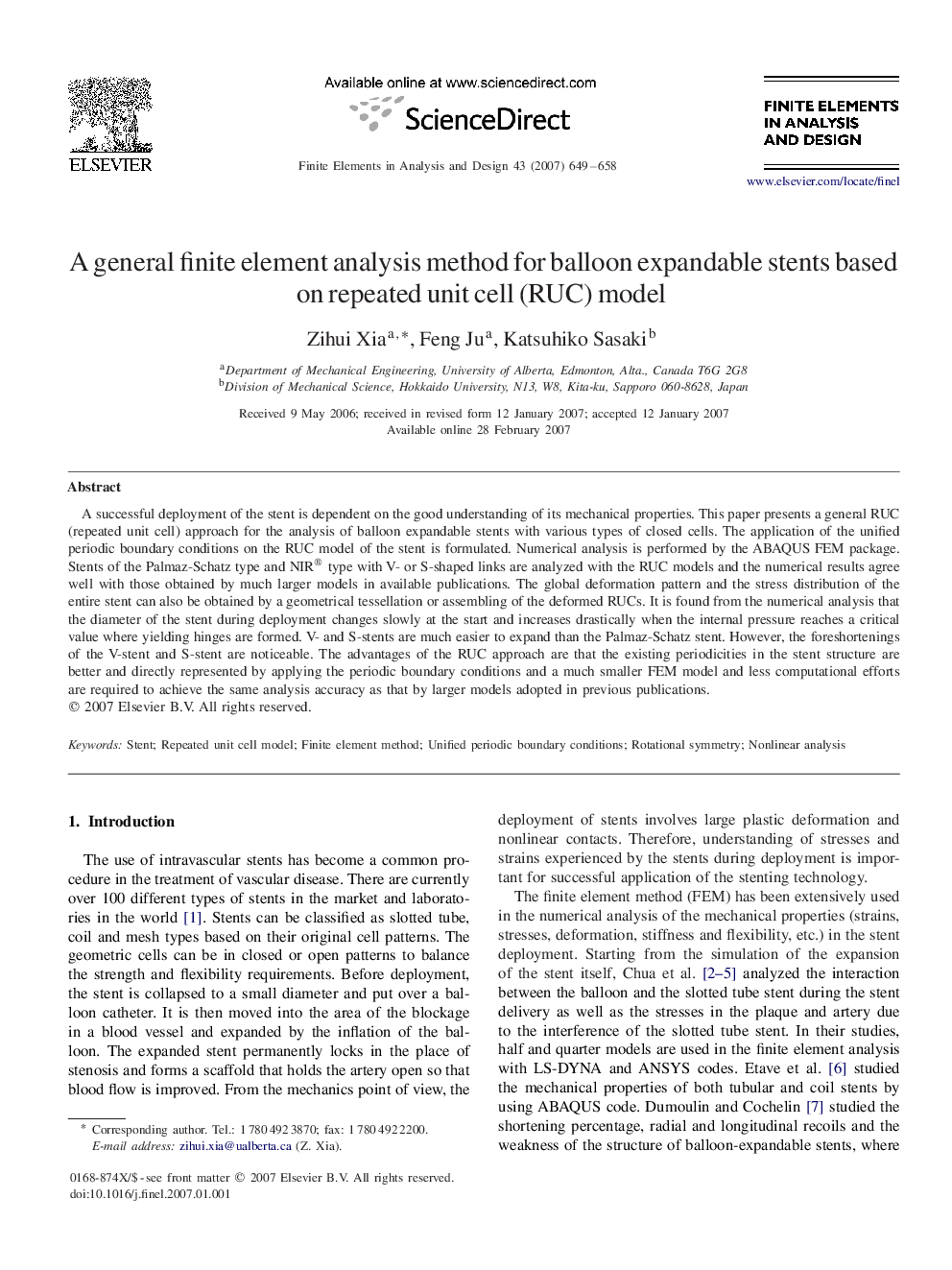| Article ID | Journal | Published Year | Pages | File Type |
|---|---|---|---|---|
| 514786 | Finite Elements in Analysis and Design | 2007 | 10 Pages |
A successful deployment of the stent is dependent on the good understanding of its mechanical properties. This paper presents a general RUC (repeated unit cell) approach for the analysis of balloon expandable stents with various types of closed cells. The application of the unified periodic boundary conditions on the RUC model of the stent is formulated. Numerical analysis is performed by the ABAQUS FEM package. Stents of the Palmaz-Schatz type and NIR®® type with V- or S-shaped links are analyzed with the RUC models and the numerical results agree well with those obtained by much larger models in available publications. The global deformation pattern and the stress distribution of the entire stent can also be obtained by a geometrical tessellation or assembling of the deformed RUCs. It is found from the numerical analysis that the diameter of the stent during deployment changes slowly at the start and increases drastically when the internal pressure reaches a critical value where yielding hinges are formed. V- and S-stents are much easier to expand than the Palmaz-Schatz stent. However, the foreshortenings of the V-stent and S-stent are noticeable. The advantages of the RUC approach are that the existing periodicities in the stent structure are better and directly represented by applying the periodic boundary conditions and a much smaller FEM model and less computational efforts are required to achieve the same analysis accuracy as that by larger models adopted in previous publications.
